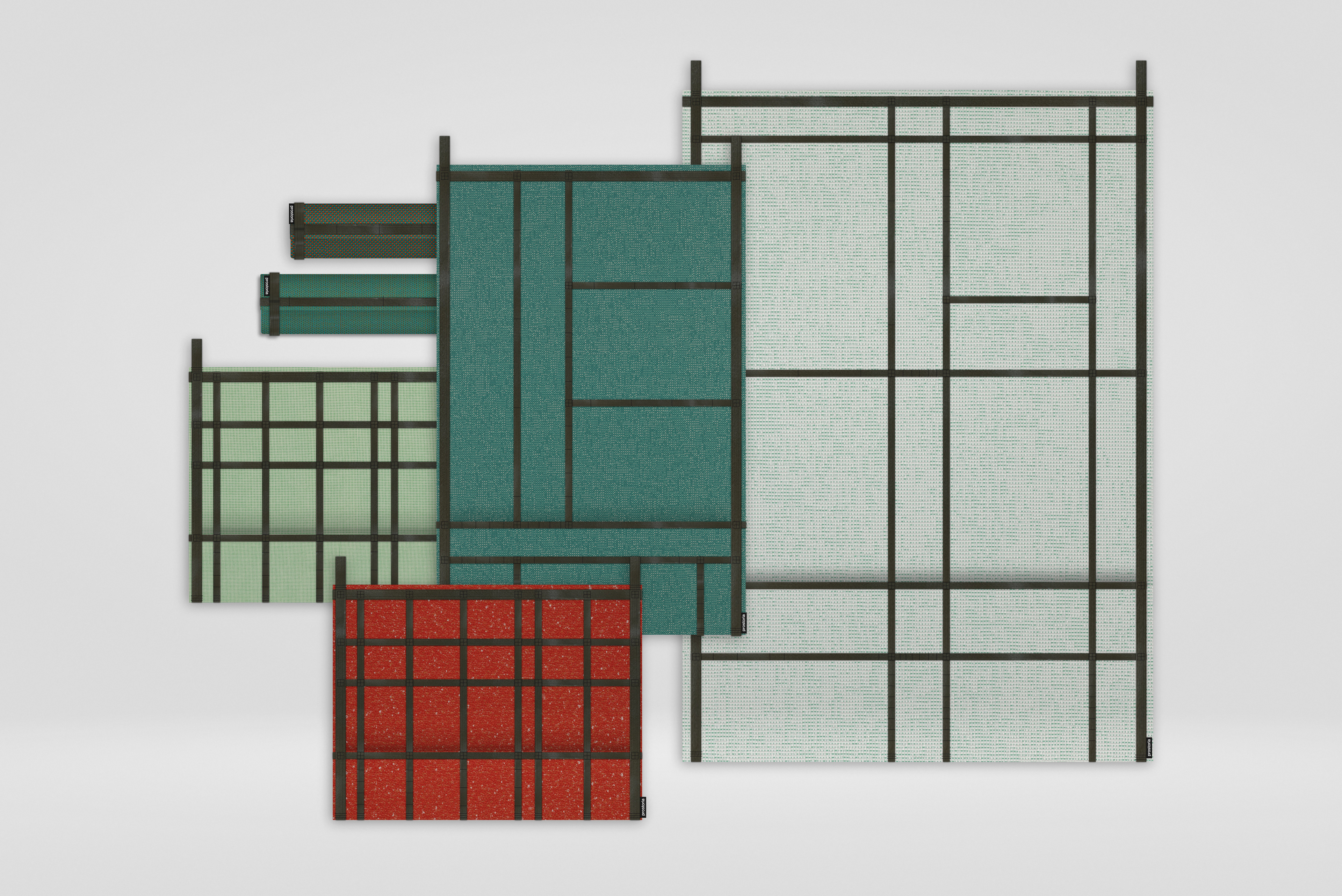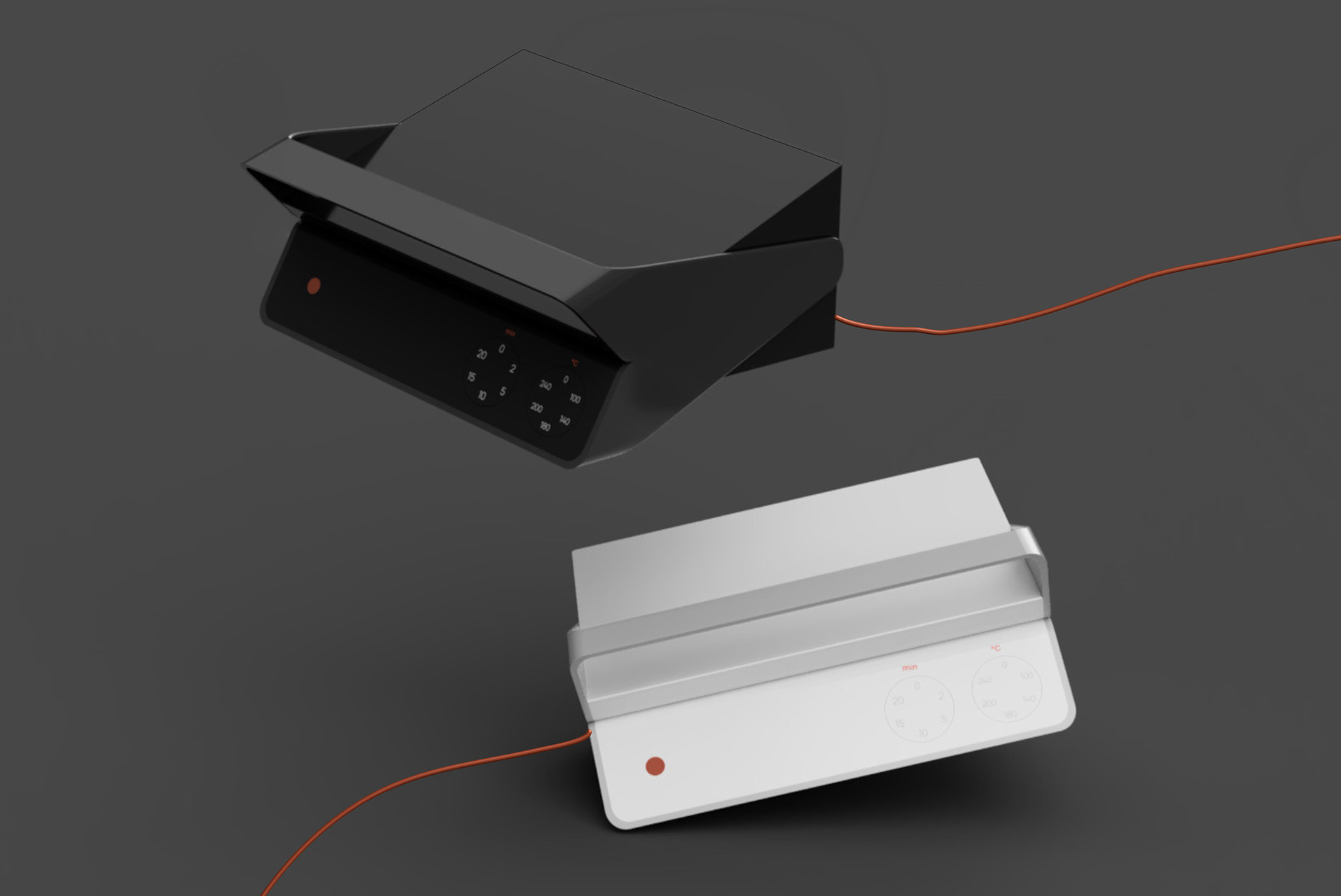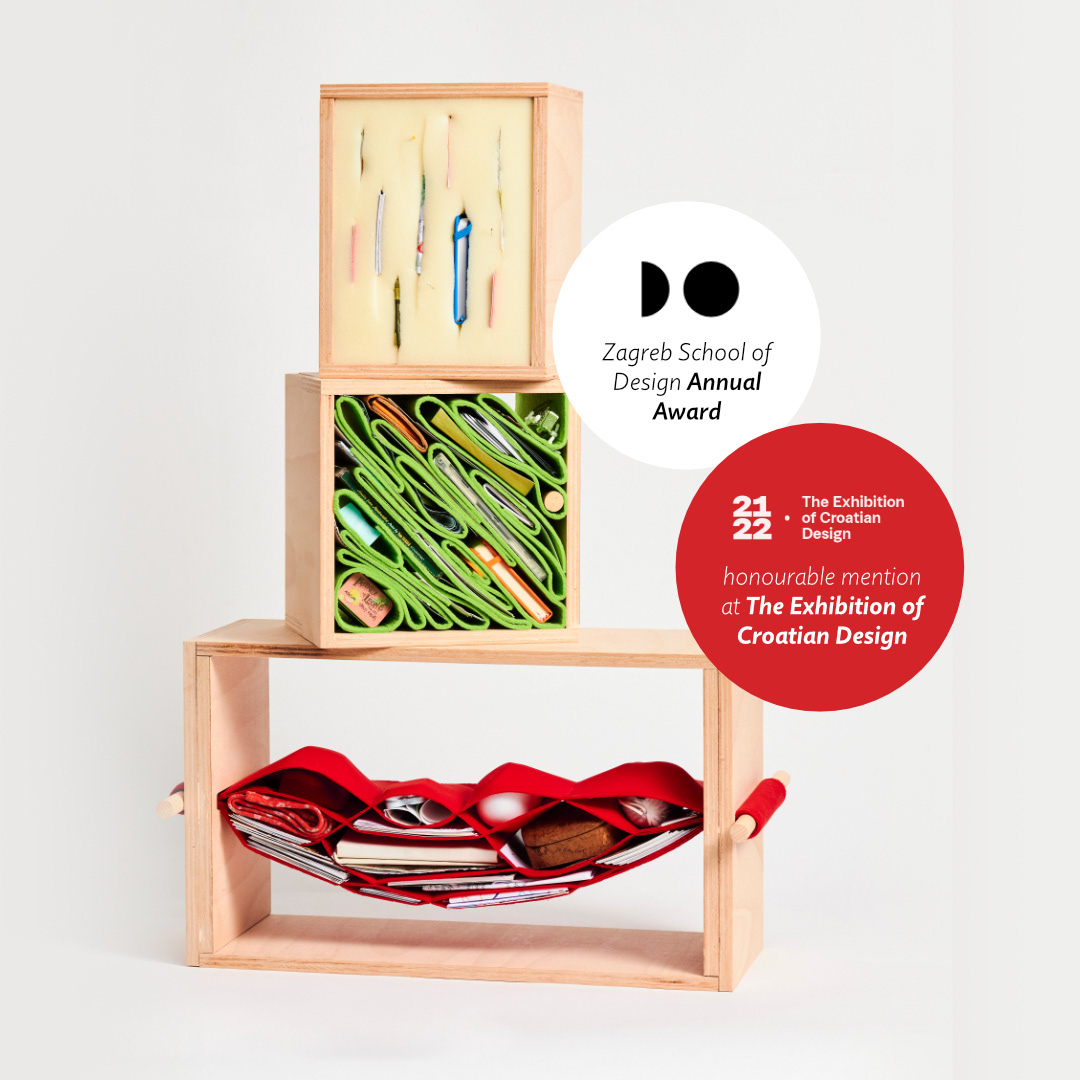
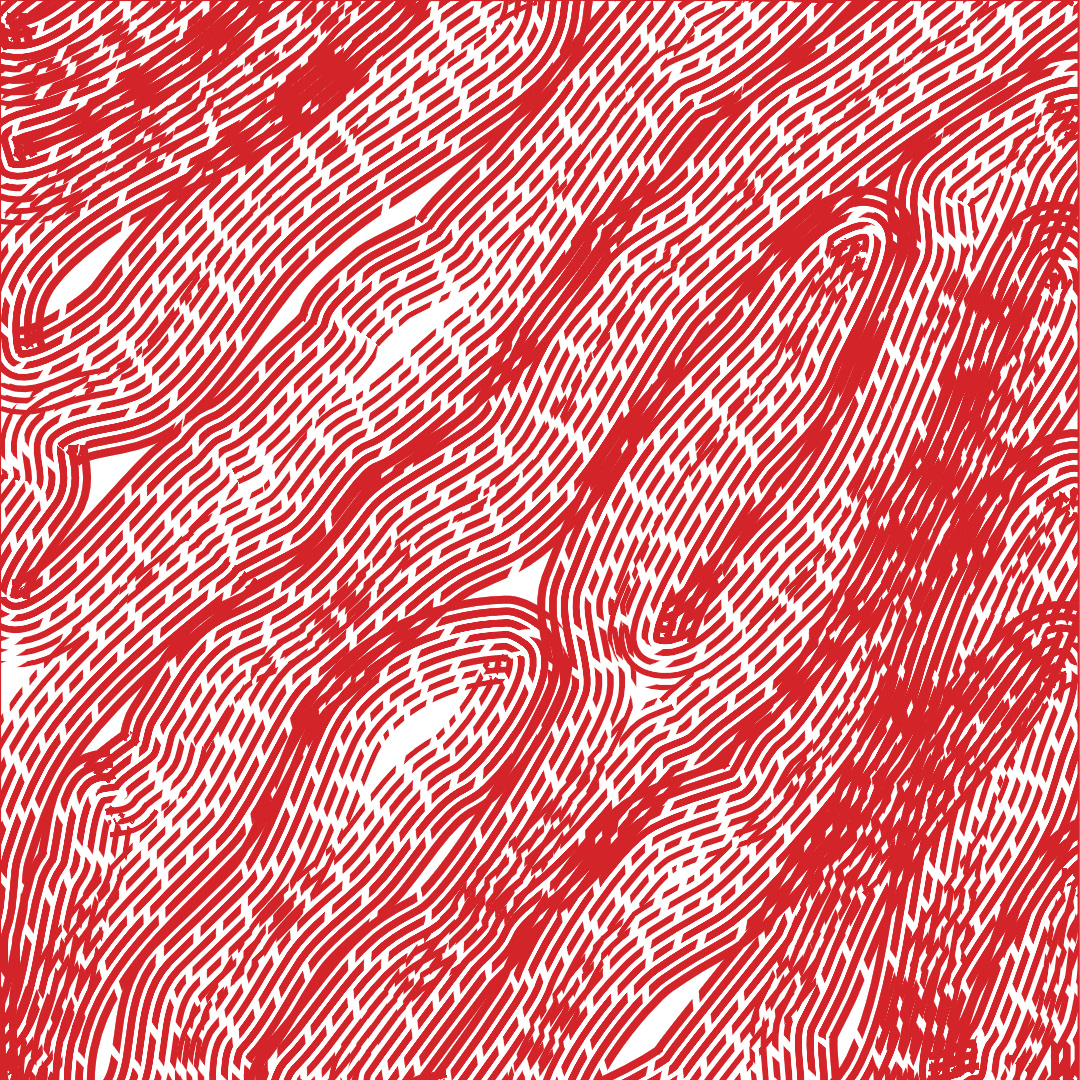
Winner of School of Design Annual Award 2021/2022
Honourable mention featuring in the Exhibition and Review of Croatian Design 21/22
Honourable mention featuring in the Exhibition and Review of Croatian Design 21/22
Interpreted as a unique tissue of fabric materials, the Fabric of Memory receives different experiences in different ways, reflecting the behaviour of real human memory – exploring the potential of a modern concept for non-traditional storage.
The fabric is reshaped, transformed, reaching capacity, growing organically and disappearing as forgetting in symbiosis with the memories that are embedded in it. With each new stored item of experience, all other memories in the system change position and meaning as the object constantly changes in life-long interaction with its owner.
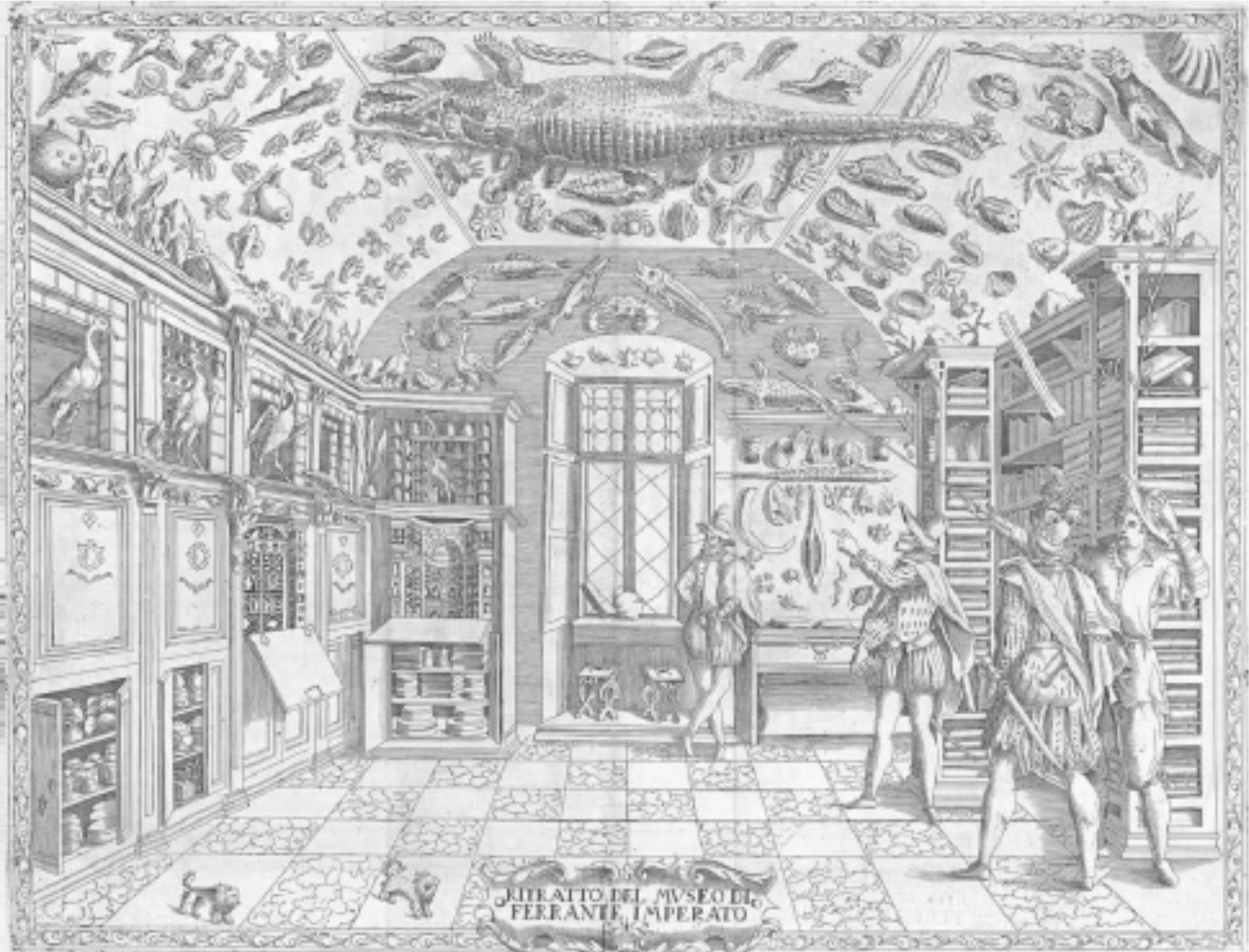
Historical cabinets of curiosities, image source: https://www.sothebysinstitute.com/news-and-events/news/cabinets-of-curiosities-and-the-origin-of-collecting
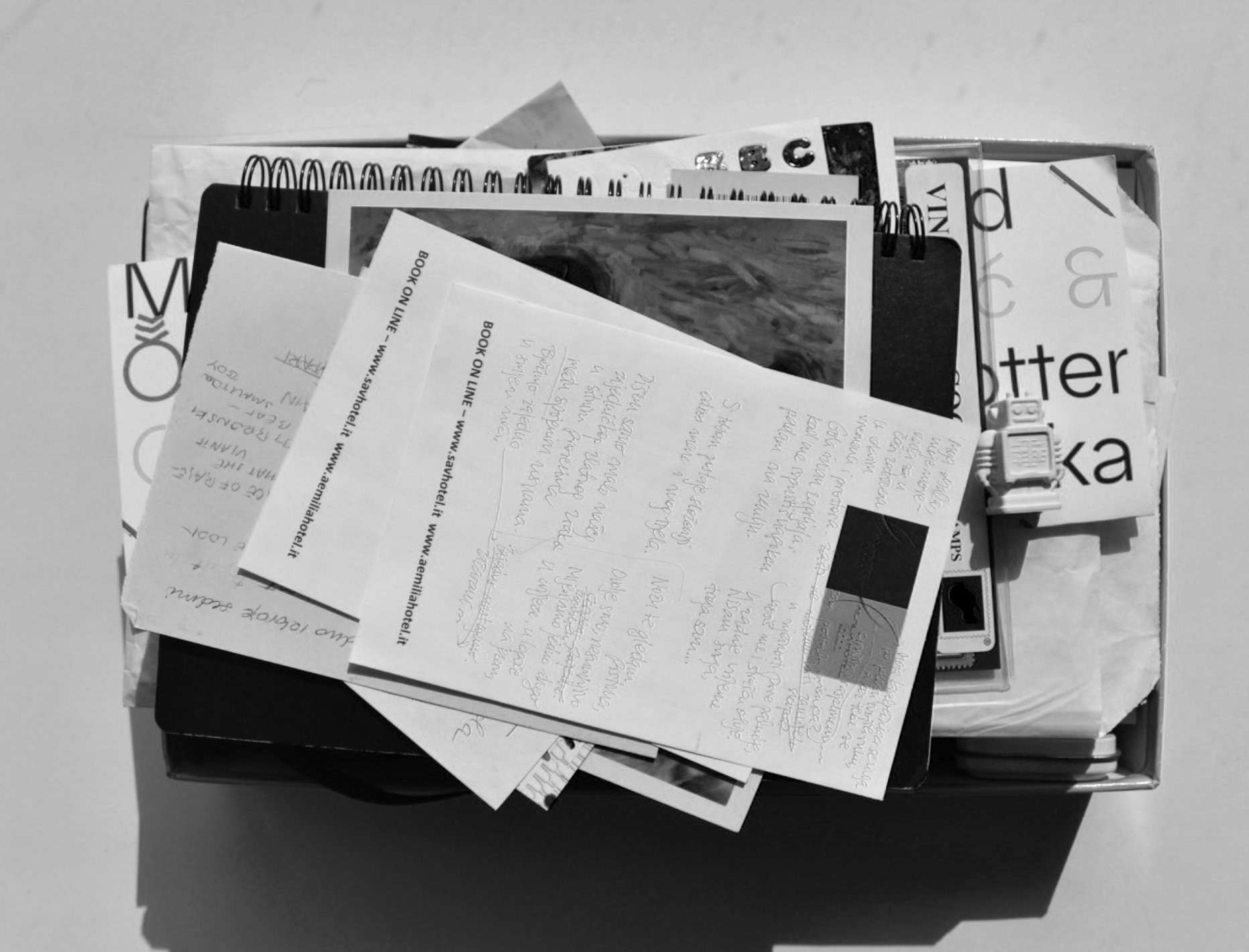
The previous modern form of personal cabinets of curiosities - a hidden box of ephemera.
Memory is an important part of the human experience which, by creating a coherent connection between the past, present and future, lays the foundation for the construction and development of an individual's identity.
Collecting experiences and
the experience of collecting
the experience of collecting
Cabinets of curiosities, today often as hidden boxes of ephemera, are dedicated to taming space and time by collecting objects as a scenography for creating personal narratives – a space where the collector-curator has the authority of representation and collected objects become props in personal mythologies and extensions of the self.
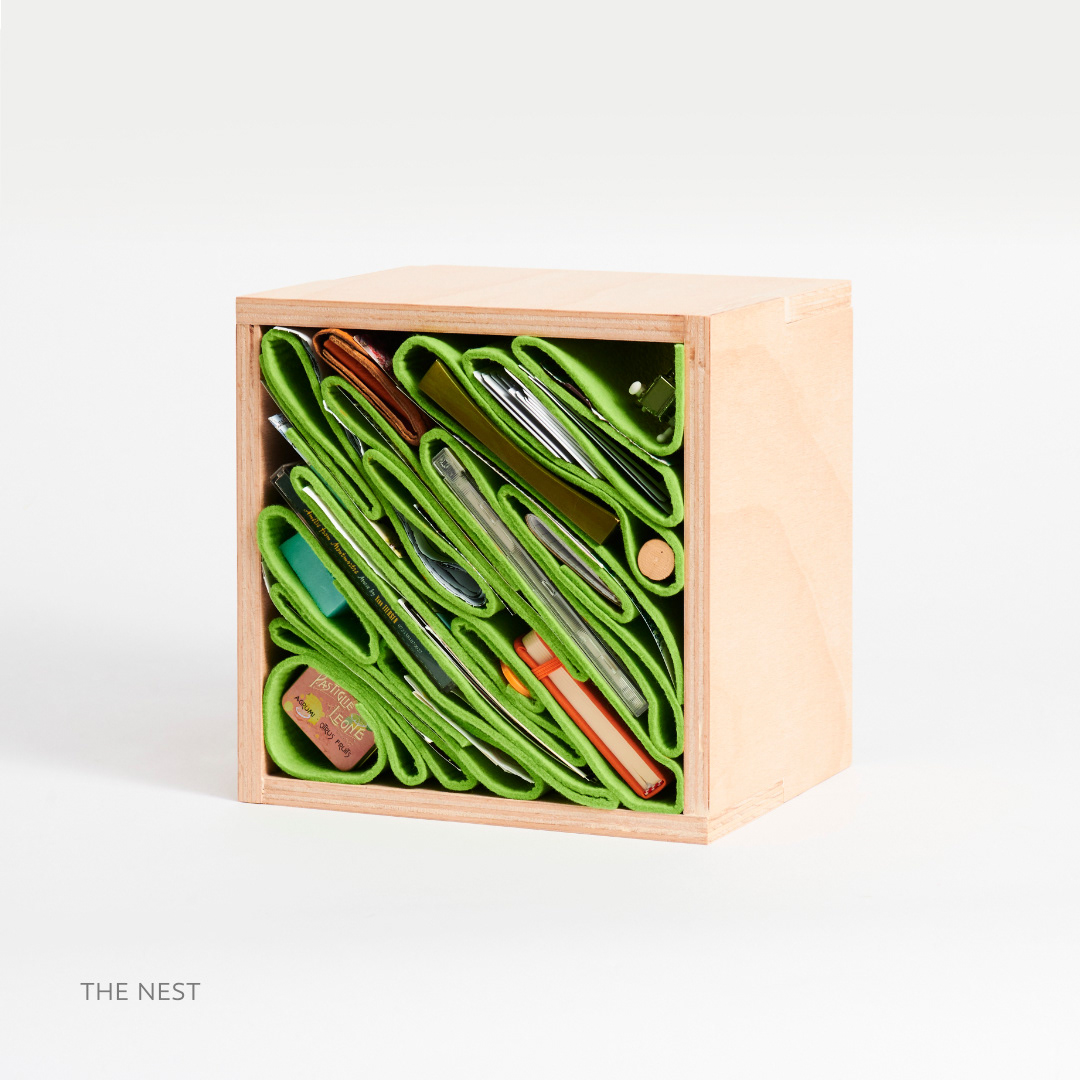

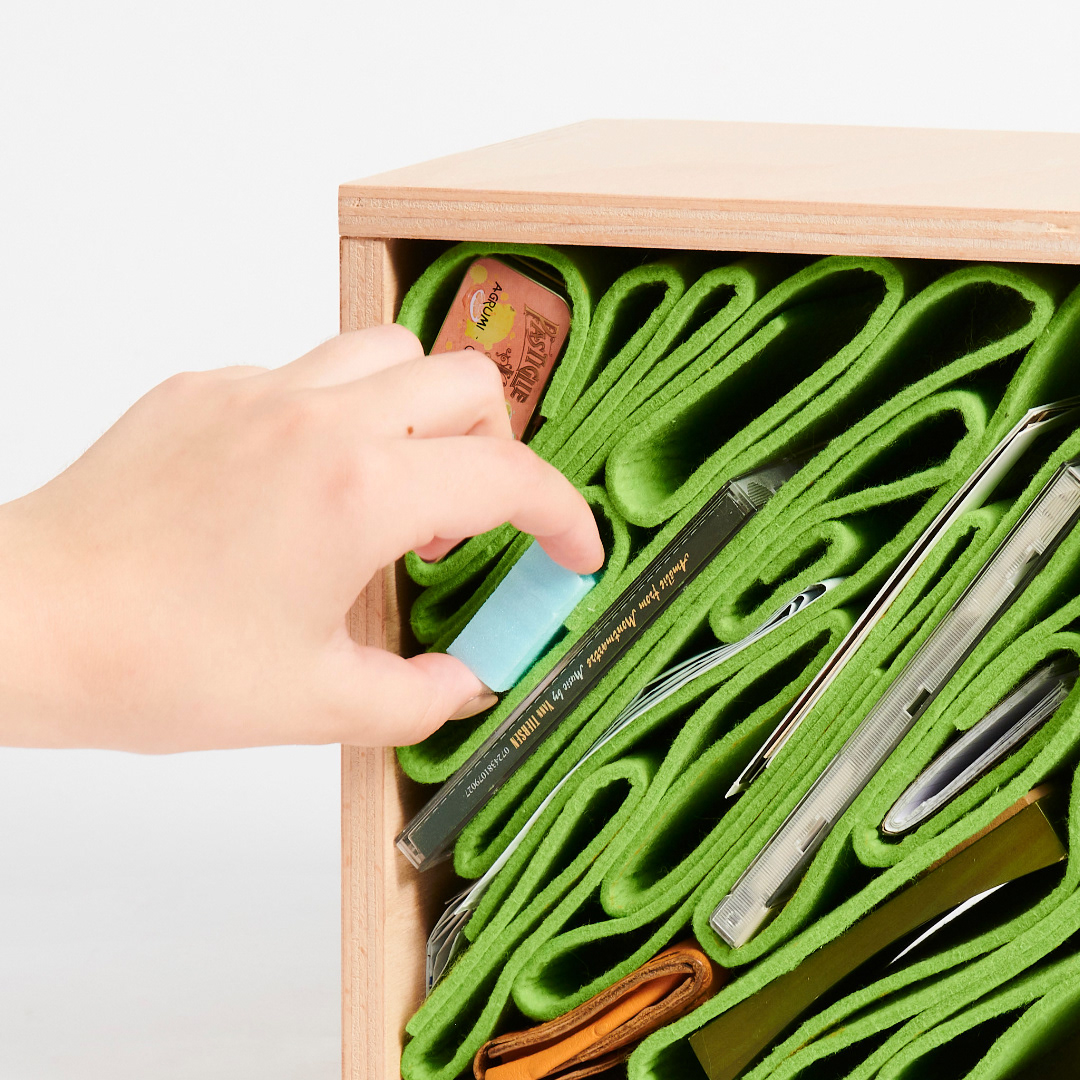
The Nest
—a haven of green felt with protected, warm and comforting memories awaiting the return to restorative nostalgia
—a haven of green felt with protected, warm and comforting memories awaiting the return to restorative nostalgia
The Nest is a felt nest of memories that stores warm and intertwined memories so that they are protected and safe while awaiting re-reflection and restorative return to comforting nostalgic moments from the past.
Dense diagonal layers of felt that resemble the cellular structures of tissue protect the contents that are safely placed between them and hidden. With time, they become entangled in the structure and take the form of gentle felt curves. They only partially emerge from the textile as a reminder of the safety of memory, most visible when light passes through layers of tissue creating interesting patterns
Dense diagonal layers of felt that resemble the cellular structures of tissue protect the contents that are safely placed between them and hidden. With time, they become entangled in the structure and take the form of gentle felt curves. They only partially emerge from the textile as a reminder of the safety of memory, most visible when light passes through layers of tissue creating interesting patterns
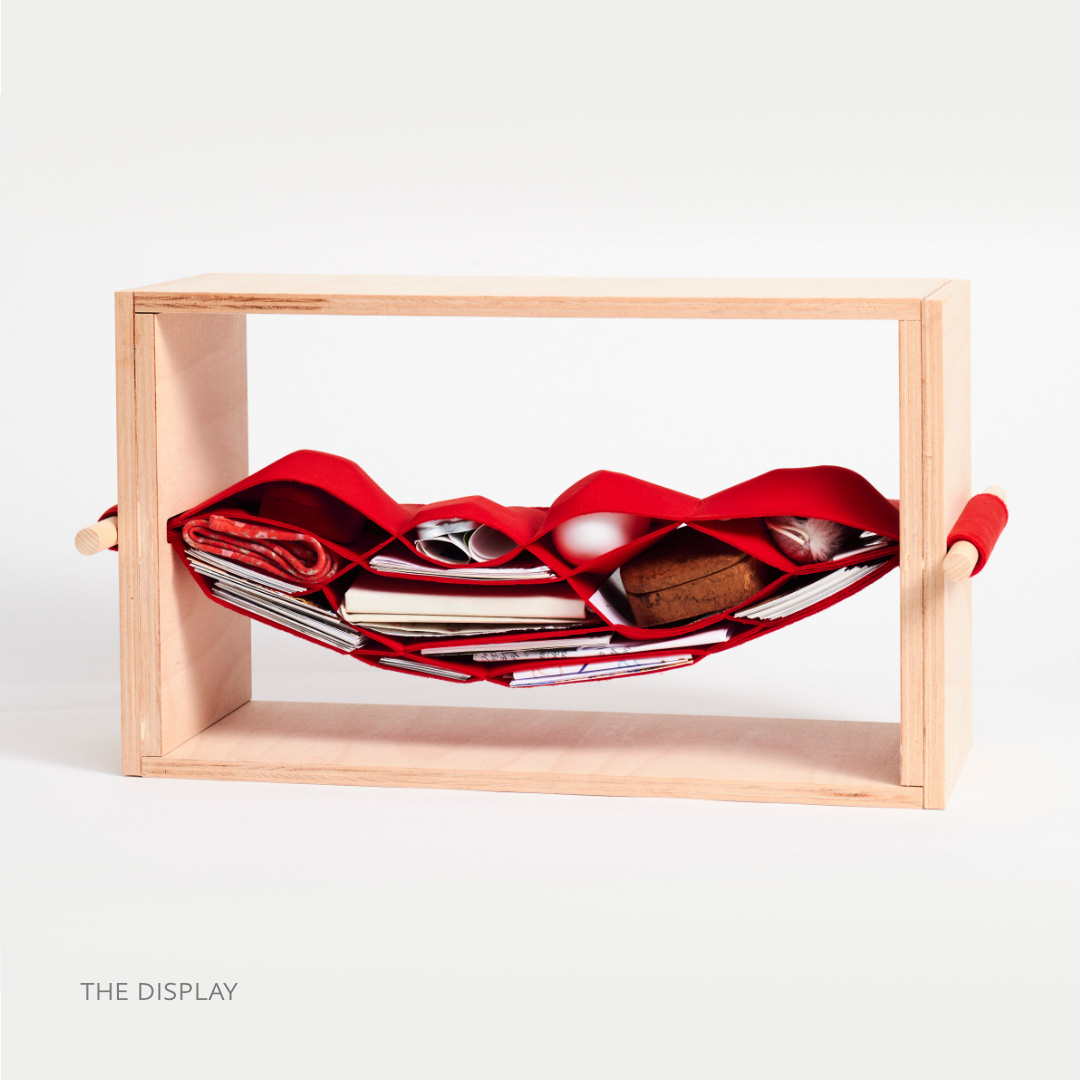


The Display
—a red neoprene exhibition of memories that are visible, active and present in our space and constantly transforming
—a red neoprene exhibition of memories that are visible, active and present in our space and constantly transforming
The Display is an exhibition that makes objects of memory accessible, visible and present in personal space.
A unique stitched fabric tissue forms interesting patterns in contact with memories. Within the frame as an exhibition space, the fabric takes on different flows and compositions — transformed from the empty form of a thin red line by remembering and forgetting, always reflecting the current state of our relationship with memory—which memories the owner-curator considers relevant at that moment and chooses to expose.
This object is a kind of "exhibition" of history that is (still) available and current — the exhibition lives, hides, exhibits or shares in a constant state of change and formation of balance.
A unique stitched fabric tissue forms interesting patterns in contact with memories. Within the frame as an exhibition space, the fabric takes on different flows and compositions — transformed from the empty form of a thin red line by remembering and forgetting, always reflecting the current state of our relationship with memory—which memories the owner-curator considers relevant at that moment and chooses to expose.
This object is a kind of "exhibition" of history that is (still) available and current — the exhibition lives, hides, exhibits or shares in a constant state of change and formation of balance.
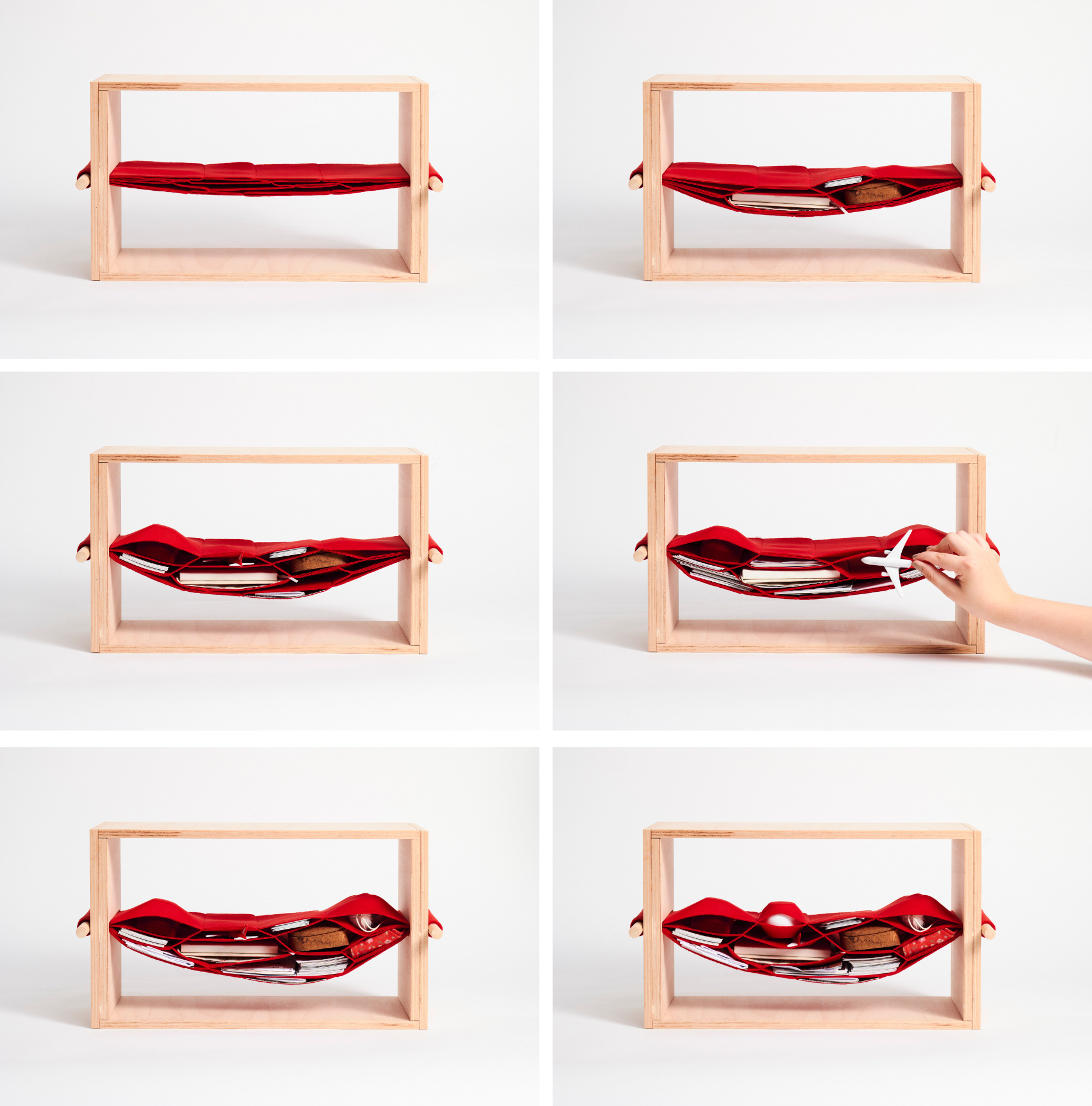

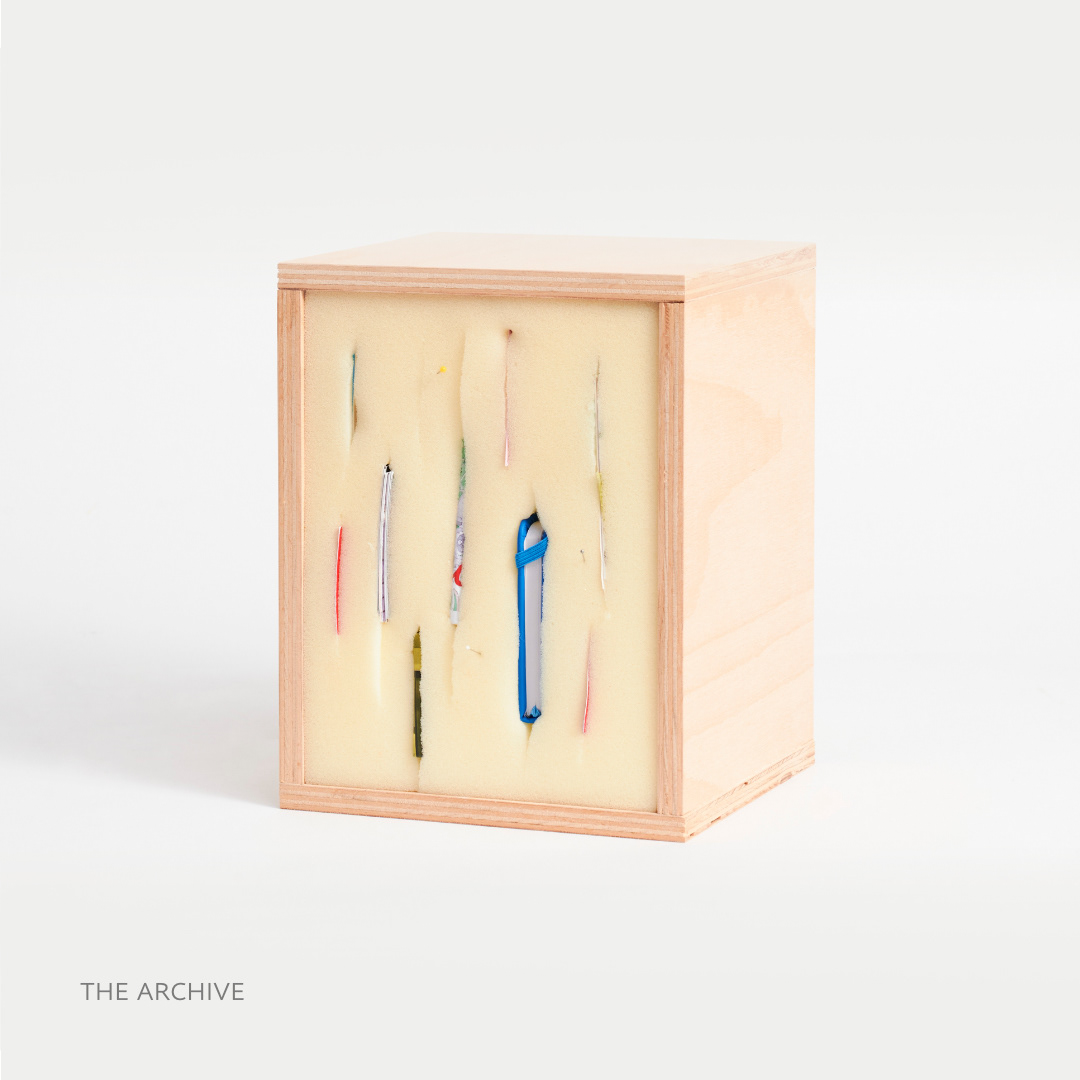
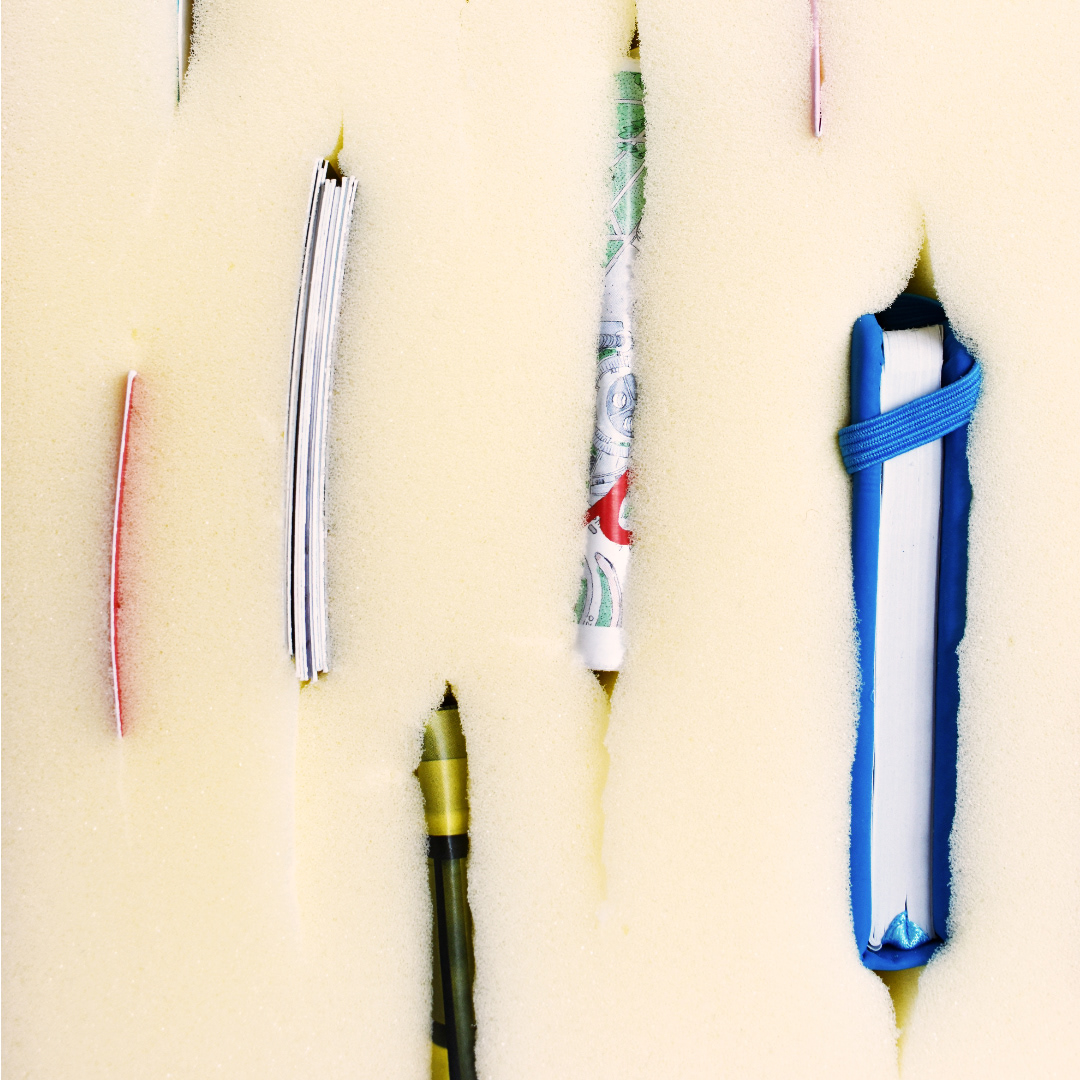

The Archive
—an inventory of dense foam storing compact, systematic and structured memory that becomes absorbed and lost
—an inventory of dense foam storing compact, systematic and structured memory that becomes absorbed and lost
With each interaction of cutting into the foam, the past becomes the past. A new separate, at the same time soft and strict vertical compartment is created in the memory, which acquires a patina with the passage of time.
The foam is an exceptional material for its receptive and absorbent character that invites touch, suggesting absorbent brain tissue. It constantly subordinates its shape, hiding the material that is inserted into it. The object of memory becomes embedded in the tissue until it is lost. Forgotten objects and hidden compartments are rediscovered by touch and new incisions in the dense structure of the foam.
The feeling of nostalgia, as well as the sentimental attachment to the environment of objects, are a potential for the creation of new rituals and new typologies. There is a difference between keeping and putting away—storing a memory that is more complex than putting it away irretrievably in a box. These sentimental objects are records of associative links with the past, by rereading which a person remembers, confronts, relives defining emotional experiences and defines theirown identity — so it is extremely important to preserve them.
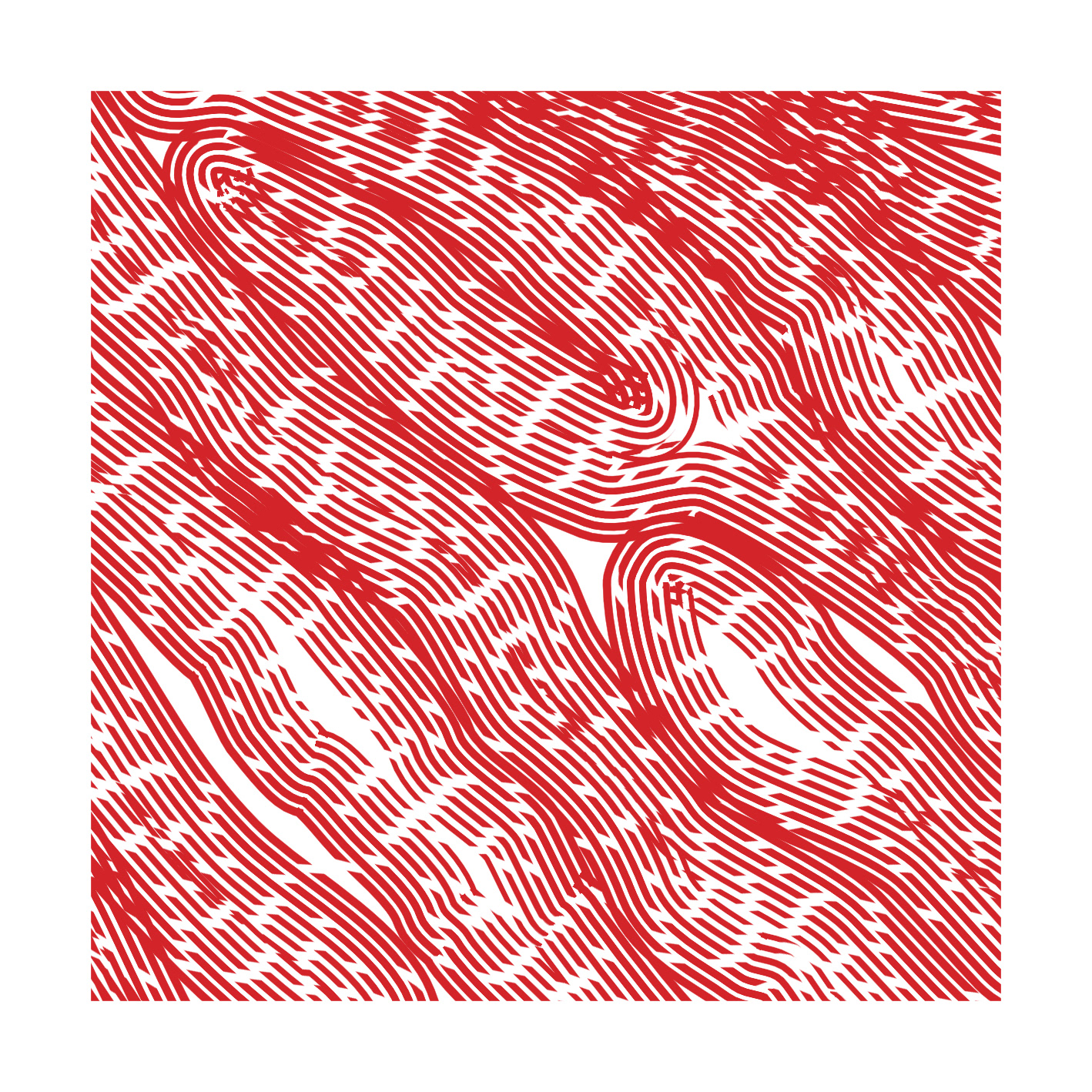

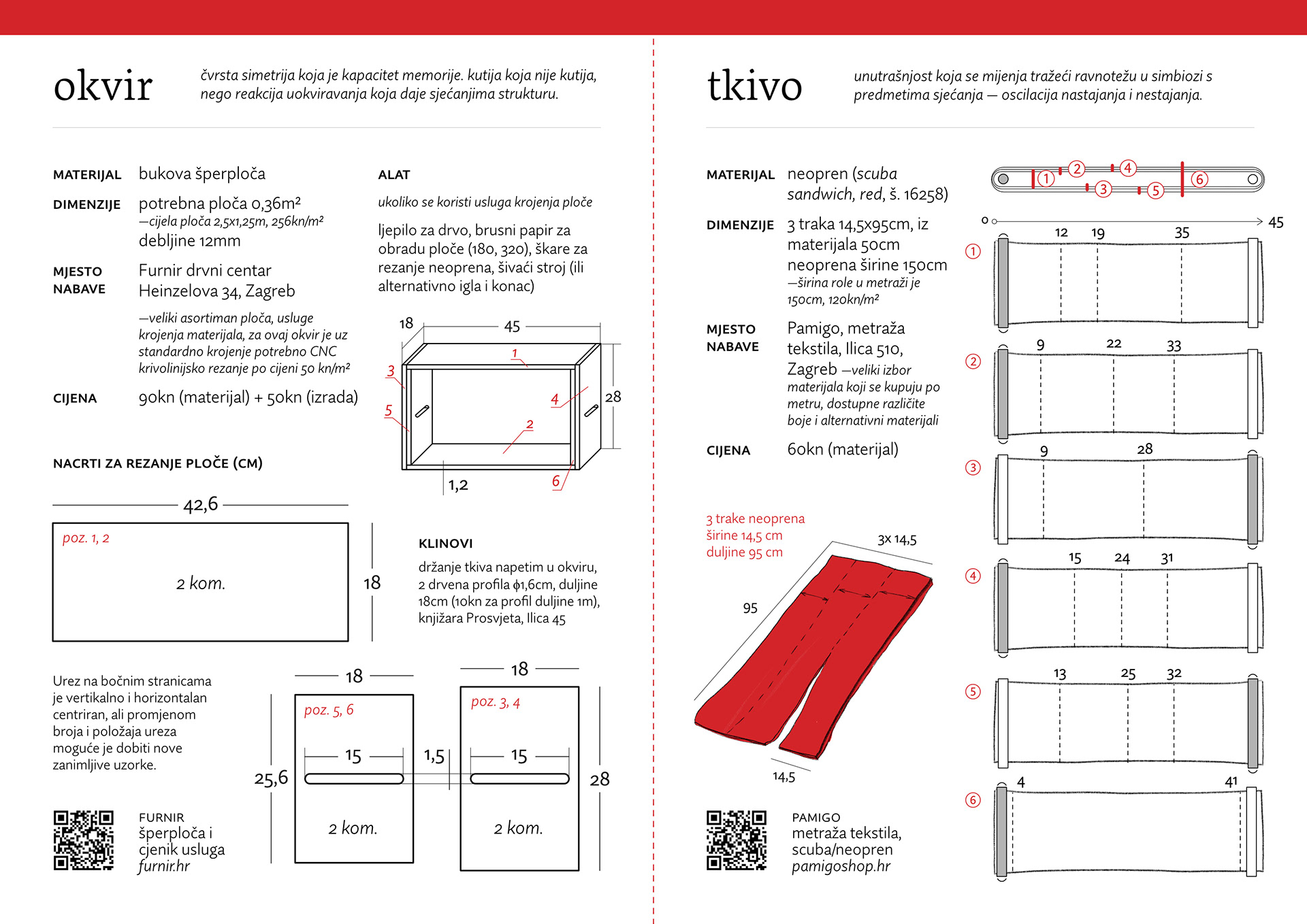
Instructions for DIY creation of one's own Fabric of Memory.
The idea of The Fabric of Memory system is to define a new typology of objects dedicated to the storage of personal objects as materialized memories. It strives to raise awareness of the importance of objects as a means of expressing identity, to affirm independent creation of a truly unique personal product, as well as experimentation with the material and the subject environment.
The project was created at Zagreb School of Design.
Winner of School of Design Annual Award 2021/2022.
Winner of School of Design Annual Award 2021/2022.
Mentor: assoc. prof. mr. sc. Ivana Fabrio
Assistant: Nina Bačun
Photographs: Pavel Posavec
Assistant: Nina Bačun
Photographs: Pavel Posavec
